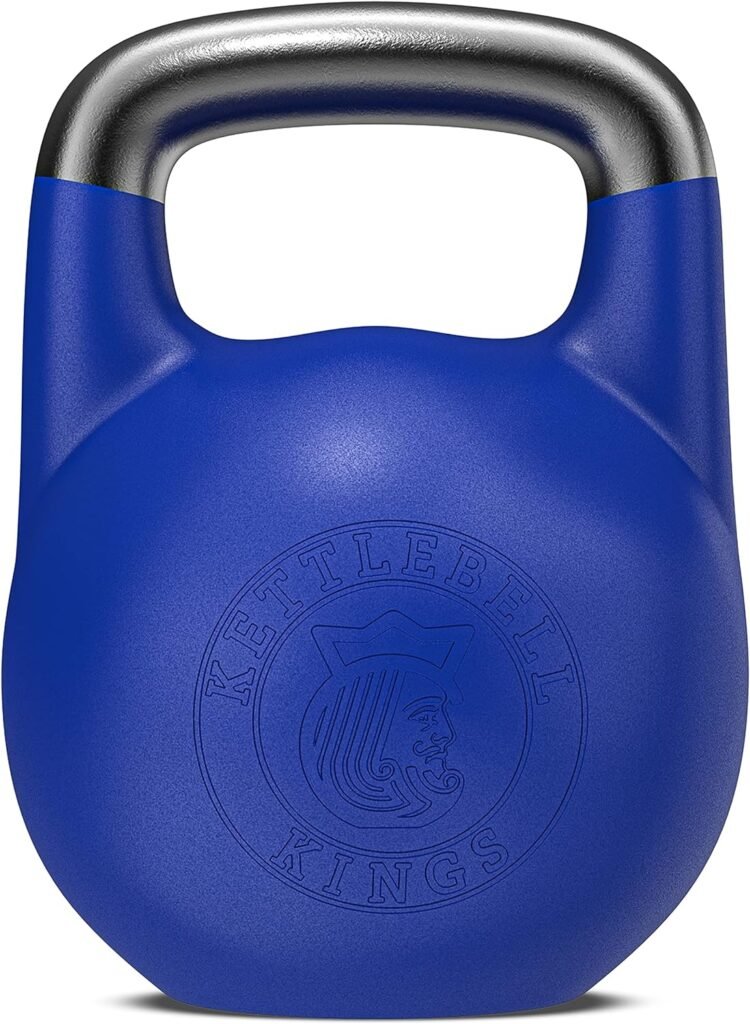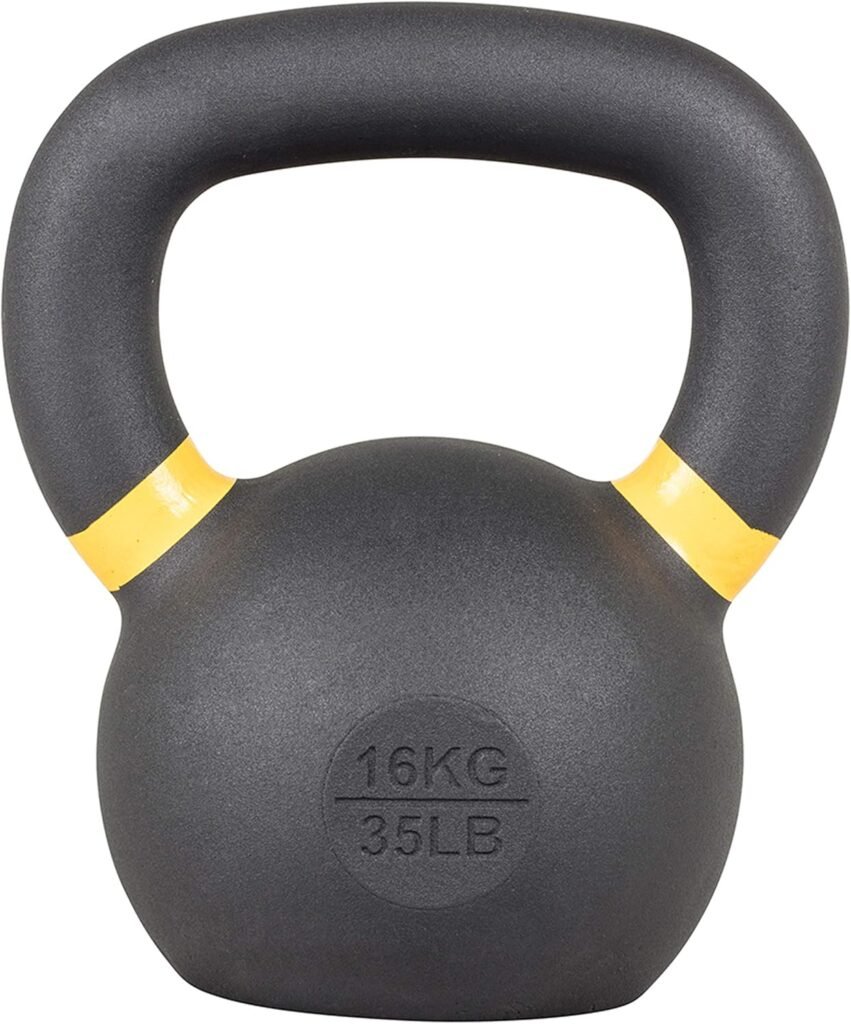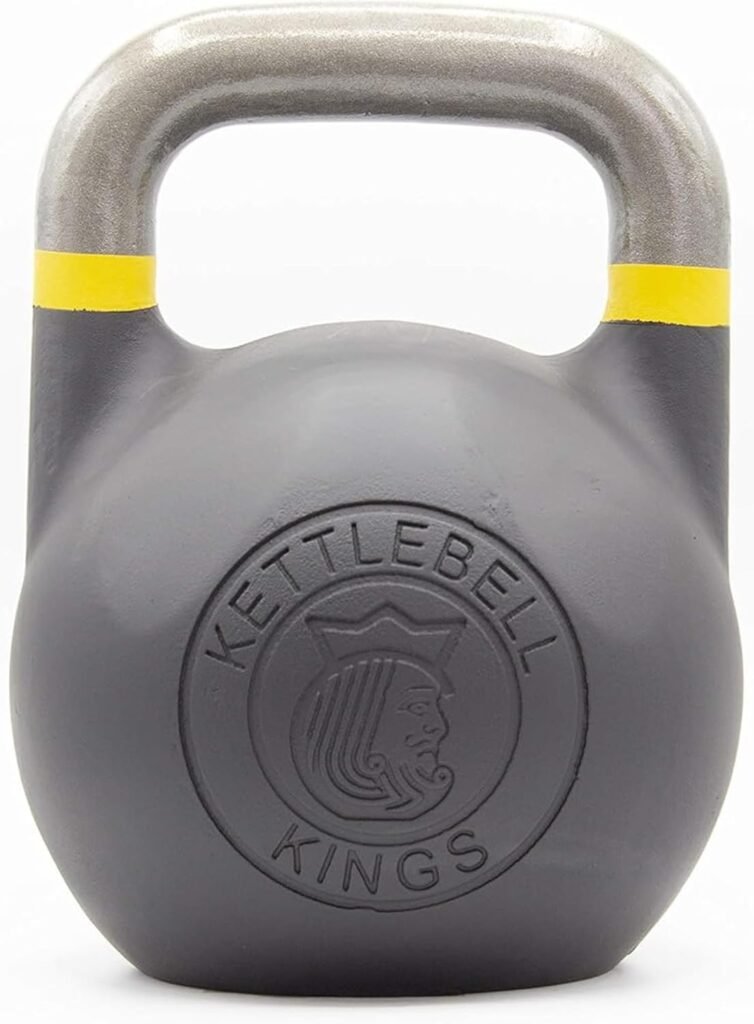Can you get ripped doing kettlebell swings? It’s a question that might have crossed your mind, especially if you’re looking to shake up your workout routine or achieve a more defined physique. Kettlebell swings often get spotlighted in fitness circles due to their simplicity and effectiveness, but are they enough by themselves to get you ripped? Let’s break down this question and learn more about this fascinating and dynamic exercise.

Understanding Kettlebell Swings
Kettlebell swings are a form of ballistic exercise integrating elements of strength, cardio, and flexibility. By swinging a kettlebell, a cast iron or steel weight, you engage different muscle groups simultaneously and in a manner that’s often overlooked by more traditional free-weight exercises.
Origins of Kettlebell Swings
Kettlebells have origins that trace back to Russia, where they were initially used as counterweights for agriculture. Over time, they became integral to physical training regimens due to their versatility and effectiveness. When performing a kettlebell swing correctly, you effectively harness the heritage of a tool that warriors and athletes have used for centuries to build strength and resilience.
Mechanics of the Swing
The kettlebell swing is primarily driven by a hip-hinge movement, as opposed to a squat-based movement. Mastering this form is crucial, as it ensures that you’re engaging the right muscles and minimizing the risk of injury. With each swing, your hips act as a hinge, while your back remains straight. The momentum generated by your legs and hips propels the kettlebell upward to shoulder height.
Muscles Worked During Kettlebell Swings
Kettlebell swings engage several major muscle groups:
- Hamstrings
- Glutes
- Lower back
- Core muscles
- Shoulders
This comprehensive muscle engagement is one reason kettlebell swings can be an effective component of a well-rounded workout routine.
Benefits of Kettlebell Swings
Kettlebell swings offer multiple benefits, making them an attractive exercise choice for those aiming for an effective and dynamic workout regime.
Full-Body Workout
Kettlebell swings efficiently target several muscle groups at once. This full-body workout ensures you build strength and endurance while also getting a good amount of cardio.
Improved Cardiovascular Fitness
Any exercise that raises your heart rate contributes to cardiovascular conditioning. Kettlebell swings are no exception, providing a perfect blend of strength training and cardio in a single exercise.
Core Stability
As you swing the kettlebell, your core is consistently engaged to stabilize your body and maintain balance. Over time, this leads to improved core strength and stability, contributing to better posture and a reduced risk of injuries.
Time Efficiency
With kettlebell swings, you can achieve a high-intensity workout in a shorter amount of time. This makes them ideal for individuals with busy schedules who still wish to enjoy the benefits of a comprehensive workout.
You are currently viewing a placeholder content from YouTube. To access the actual content, click the button below. Please note that doing so will share data with third-party providers.
Can Kettlebell Swings Alone Make You Ripped?
To determine whether kettlebell swings alone can get you ripped, we must first clarify what “ripped” means. Typically, being “ripped” involves having a well-defined physique with a low body fat percentage and visibly toned muscles.
The Role of Diet
Getting ripped is not solely about exercise. Diet plays a crucial role in achieving a toned body. Without a balanced diet that supports your fitness goals, even the most intense workout routine might not yield the desired results. Consuming the right proportion of macronutrients and maintaining a caloric deficit is vital for fat loss and muscle definition.
Complementing Other Exercises
While kettlebell swings are powerful, relying on them alone may not be sufficient to target all muscle groups comprehensively. To get truly ripped, you should integrate kettlebell swings into a broader workout routine that includes a variety of exercises targeting different muscle groups in different ways.
Consistency is Key
Any workout’s effectiveness is dependent on consistency. Regularly incorporating kettlebell swings into your fitness routine and coupling them with other exercises and a proper diet can enhance muscle tone and help you get ripped over time.
Designing an Effective Kettlebell Routine
A well-rounded kettlebell routine can make the difference between average and outstanding results. Here’s how you can design a routine that maximizes your gains.
Basic Structure
A balanced kettlebell routine combines swings with other kettlebell movements. Here’s a basic outline:
Warm-Up
- Jumping Jacks: 1-2 minutes
- Dynamic Stretches: 5-10 minutes
Main Workout
- Kettlebell Swings: 3 sets of 15-20 reps
- Goblet Squats: 3 sets of 10-15 reps
- Kettlebell Rows: 3 sets of 10 reps each arm
- Kettlebell Presses: 3 sets of 8-12 reps
Cool Down
- Stretching: 5-10 minutes focusing on the muscles used
Periodization
Periodization involves varying your workout routine over time to ensure continued progress and avoid plateaus. This can include changing the number of sets and reps, swapping in different kettlebell exercises, or increasing the weight of the kettlebell.
Incorporating Rest and Recovery
Allowing your body to recover is crucial. Adequate rest between sessions prevents overtraining, reduces injury risk, and promotes muscle growth. Ensure your routine aligns with your fitness level, and don’t forget to listen to your body.

Common Mistakes and How to Avoid Them
Kettlebell swings, like any exercise, require proper form to avoid injury and maximize benefits. Here are some common mistakes and tips on how to avoid them:
Mistake #1: Incorrect Setup
Improper setup can lead to poor execution. Always start with the kettlebell slightly in front of you. Hinge at the hips and keep your back straight when picking it up to initiate your swing.
Mistake #2: Squatting Instead of Hinging
The kettlebell swing is centered around the hip-hinge mechanism, not a squat. Keep your knees slightly bent, but focus on driving your hips back and then forward.
Mistake #3: Using Arms Instead of Hips
The power of kettlebell swings comes from your hips, not your arms. Allow the momentum of your hip thrust to carry the kettlebell upwards, keeping your arms in a relaxed state.
Mistake #4: Poor Core Engagement
Underestimating the importance of core stability can compromise your form and lead to a lower back injury. Engage your core throughout the swing to maintain proper posture and protect your spine.
Mistake #5: Neglecting Proper Breathing
Proper breathing enhances performance and safety. Exhale forcefully as you swing the kettlebell up and inhale as it comes down.
Kettlebell Swings and Weight Loss
While kettlebell swings alone may not transform your physique into being ripped, they are effective for weight loss, which can help you become more defined.
Caloric Burn
Kettlebell swings burn a significant number of calories in a short amount of time. This not only aids in weight loss but also improves cardiovascular health.
Metabolic Benefits
Kettlebell swings boost your metabolic rate, which continues to burn calories even after the workout concludes. This afterburn effect is known as excess post-exercise oxygen consumption (EPOC).
Combining with Nutrition
Pairing your kettlebell swing routine with a healthy, balanced diet can accelerate weight loss. Consuming whole foods, reducing processed food intake, and staying hydrated are fundamental components of an effective weight loss regime.
Real-Life Success Stories
Hearing about others’ success can be inspiring and motivating. Here are a couple of real-life instances where individuals have incorporated kettlebell swings into their routines with notable success.
Story 1: From Average to Athletic
One fitness enthusiast began incorporating kettlebell swings into their routine three times a week, alongside a balanced diet. Within months, they noticed improved muscle definition, particularly in the core and lower body, attributing their newfound athleticism largely to the consistency of their kettlebell workouts.
Story 2: Post-Pregnancy Transformation
Another individual, seeking an efficient workout post-pregnancy, began using kettlebell swings due to their accessibility and effectiveness. Combined with other exercises and a nutritious diet, they lost over 30 pounds and regained their energy and confidence.
Incorporating Kettlebell Swings Into Your Lifestyle
Adapting kettlebell swing routines to fit your lifestyle can ensure long-term commitment and successful implementation.
Home Workouts
Kettlebell swings are an excellent choice for home workouts due to minimal equipment. You only need a kettlebell and a small space to get started.
On-the-Go Fitness
The portability of kettlebells makes them ideal for on-the-go fitness. Whether in a park, at the gym, or at home, you can easily incorporate kettlebell swings into your routine.
Progress Tracking
Tracking your progress can help keep you motivated. Record your workouts, kettlebell weights, and personal bests, and reflect on improvements over time.
Conclusion
So, can you get ripped doing kettlebell swings? While kettlebell swings alone might not suffice to achieve a completely ripped physique, they are a powerful tool in your fitness arsenal. They offer efficient cardio, build muscle endurance, and improve core stability. When combined with a balanced diet and a comprehensive workout routine, kettlebell swings can play a substantial role in enhancing your muscle definition and overall fitness. Remember, fitness is a journey that involves consistency, variety, and dedication. Adapting kettlebell swings into that journey can provide both fresh motivation and rewarding results.











